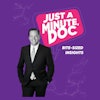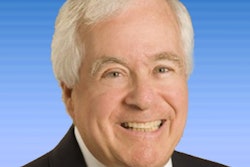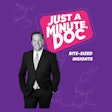
When a dental practice consistently reports high earnings, it is the most opportune time to adopt a sophisticated employer-sponsored, qualified retirement plan.
The end of the fiscal year for a dental practice is the perfect time to make this transition, considering the format of the U.S. Internal Revenue Service's approved deferred compensation plan. It is the most appropriate time for the current year's timing of the tax deduction.
The more types of retirement plans involved, the better the results. A defined benefit plan defers huge amounts of income and taxes. Therefore, a last-minute adoption allows the entire current year's allocation to be deferred almost indefinitely. Depending on the ages of the owners and key employees, their past income amounts, and estimates for the future, sums of $150,000 or more can be deferred annually.
Understanding the details
With any good plan, the devil is in the details. That's when it's time to turn to a dental certified public accountant (CPA) who has a background working with dental practices and high-income dentists. This person is one of the most important advisors when moving forward with this plan.
 Bruce Bryen, CPA, CVA.
Bruce Bryen, CPA, CVA.Having a working knowledge of many different types of retirement plans, not just the most common, is necessary. That's because the choice between a 401(k), a defined contribution plan, and a defined benefit plan could mean the difference of hundreds of thousands of dollars in only a short time.
Learning on the job is very expensive for the dentist who wants to engage with a regular CPA over a dental CPA. Though a dental CPA may seem costly, especially during the first couple of years, that specialized input is worth the cost.
Remember, with the current tax benefit and the amount of earnings and taxes that are tax-deferred, $1 million in about six years is a reasonable, achievable goal for a dentist.
The road there
Now that you have a general understanding, you may be wondering if an employer-sponsored, qualified defined benefit plan is right for your practice.
First, you need to answer the following questions:
- Are you approaching age 50 or are you older?
- Do you have consistent earnings that often fall on the higher side?
- Do you have a younger staff?
- Do you employ a large number of specialty employees, such as hygienists?
If you answered yes to any of these questions, the defined benefit plan may be right for you. Remember, consistent, higher earnings are important. Unlike a defined contribution plan in which a statutory maximum is allowed as a deductible contribution, the defined benefit plan is based on a formula. However, confer with a dental CPA before proceeding.
The defined benefit plan framework
The employer-sponsored, qualified defined benefit plan allows a reasonable design to be submitted for approval of its format. By working with a dental CPA and a qualified actuary who are aware of the practice owner's goals, a plan can be arranged in which the owner reports his or her compensation. Then, a deductible contribution is received based on current and past compensation.
If the formula calls for highly compensated employees, such as the owner, to receive 100% of compensation in retirement, that can be adopted as the approved formula.
It is important to note that there can be no discrimination in the plan. Therefore, this means that all employees must receive "similar" benefits based on their compensation, length of service at the dental practice, age, and other criteria. The dental CPA and actuary will address this information when they design the formula for retirement plan benefits.
Here's an example
A dentist reported $300,000 in wages and paid federal and state taxes on those wages. This may equate to reporting $150,000 in wages and require contributing $150,000 to the defined benefit plan as a deductible contribution on behalf of the dentist. This would save the dentist on federal, state, and Medicare taxes for the current year and each succeeding year on the $150,000 previously reported as wages that was included as part of the $300,000.
At an assumed 50% tax rate, including the double Medicare tax as the owner, federal and state taxes and the extra Medicare tax on the amount of earnings in excess of $250,000 for a married filing a joint return, there is at least $75,000 per year not being paid in taxes. That means that about half of the expected $150,000 retirement plan contribution is being paid with the tax savings.
You can interpolate based on whatever salary or earned income, such as LLP, LLC, or sole proprietorship "flow through" earnings that are reported. "S" corporation income that is classified as a dividend or is reported as profit and not as salary does not count as earned income.
The funding balance can be attained through various methodologies, especially if there is any accumulated personal savings. This also should be discussed with the dental CPA.
Furthermore, like almost all qualified employer-sponsored retirement plans, the defined benefit plan is immune from creditors, and the earnings grow without tax until the funds are disbursed.
Cons of a defined benefit plan
A defined benefit plan is dependent upon a dental practice's on-time contribution. Its earnings percentage, in excess of the guarantee that is part of the original plan design, reduces the succeeding contributions. Its losses are added to the future contributions so that the plan guarantee of its earnings percentage is always met.
In the event of a loss, the addition to the next year's guarantee almost negates the cost as long as the earnings of the dental practice are consistent. Effectively, the government is assisting in paying for the losses that must be overcome by the plan sponsor.
For example, what if there is a loss of $50,000 based on the stock market? If that amount was added to future contributions and the dentist is still in an approximate 50% tax bracket, doesn't the government take on $25,000, or half, of the additional contribution based on the dentist's tax savings in paying for the previous loss? The losses are not contributed in the following year, but that is another matter to discuss with the dental CPA so that it is understood how the payment of the losses is affordable.
Start planning
Any time is the right time to adopt an employer-sponsored defined benefit plan to save on current taxes. Start discussions with a dental CPA sooner than later to take advantage of the benefits.
Bruce Bryen, CPA, CVA, is a certified public accountant and a certified valuation analyst with more than 45 years of experience. You can learn more about him and his services here.
The comments and observations expressed herein do not necessarily reflect the opinions of DrBicuspid.com, nor should they be construed as an endorsement or admonishment of any particular idea, vendor, or organization.


















